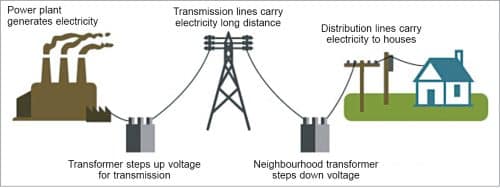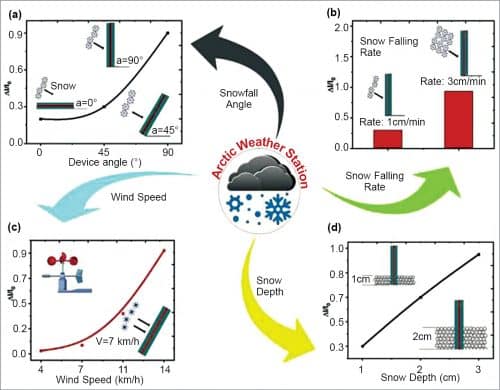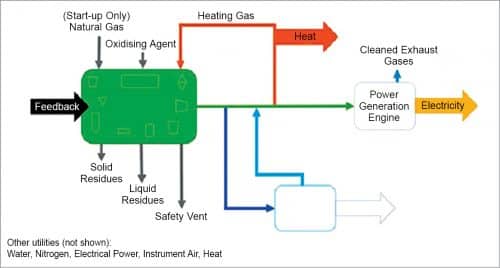Renewable energy sources like solar energy and hydro energy help in the generation of electricity in a sustainable manner. But to get the maximum benefit, we need to maximise the efficiency of conversion and find new methods while dealing with the challenges that might arise. This article discusses some of the lesser-known ways of harnessing electricity.
Energy can neither be created nor destroyed; it only gets converted from one form of energy to another. While the law of conservation of energy may have first been introduced in the nineteenth century, the man-made conversion of energy in nature to meet human requirements has been as primitive as the use of stones for producing fire.
One of the basic needs is the generation of electricity to power almost everything we see around us—from lights and fans to phones and washing machines. The conventional electric grid used fossil fuels to generate electricity, which resulted in huge carbon footprints, ultimately leaving us with drastic problems like the greenhouse effect and global warming. This has resulted in the use of renewable energy like solar energy from the sun and hydro energy from the water for generating electricity.

These resources are abundant and have no such side effects. But to get the maximum benefit, we need to maximise the efficiency of conversion and find new methods while dealing with the challenges that might arise.
For instance, a group of scholars has come up with a way to store solar energy so as to use it when sunlight is not available. The phenomenon is called photoswitching, which allows molecules known as photoswitches to absorb solar energy and transfer the energy between its configurations for a long period of time. This article discusses some of the lesser-known ways of harnessing electricity.
Snow
In numerous places worldwide, snowing is a common phenomenon in winters. In such situations, the accumulation of snow decreases the amount of sunlight that reaches the solar array. This makes solar panels an ineffective option for supplying power.
In 2019, the University of California (UCLA) researchers and colleagues designed a device—a snow-based triboelectric nanogenerator or snow TENG—that creates electricity from falling snow. It makes use of the fact that snow is positively charged and gives up electrons.
When falling snow contacts the surface of a negatively charged material, silicone layer in this case, it produces a charge that the electrode in the device captures, thereby creating electricity. Silicone is chosen because it easily extracts electrons when compared to other materials such as Teflon and aluminium foils. It also simplifies the fabrication process since silicone is easily available, making the device affordable.
This device made using 3D printing can ensure an uninterrupted power supply on integration with solar panels even in winter months. It does not require batteries for generating electricity and hence is suitable for even remote areas. The unique information provided by this device includes the amount of snow falling at a time, the direction of snowfall, velocity of wind, and much more.

Bacteria
While several bacteria are harmful to humans and give rise to a host of diseases, some others are useful. Illnesses from pathogenic bacteria include staph infections, cholera, strep throat, tuberculosis, and many more. Researchers in the US have discovered that harnessing a combination of phototropic (light-consuming) and heterotrophic (matter-consuming) bacteria in microbial fuel reactions could generate currents that are seventy times more powerful than in usual setups.
For this, the microbes are connected to cathode and anode in a microbial fuel cell, so that transfer of electrons due to oxidation occurs, which generates power.
In another instance, researchers have developed a device known as an air-gen or air-powered generator that employs a bacteria-derived protein to produce electricity from moisture present in the atmospheric air. The microorganism Geobacter is used for these ultrasmall (less than ten micrometres thick) electrically conductive protein wires. This is a non-polluting and economical way of producing renewable energy out of mere thin air 24/7, even in indoor environments, unlike most other renewable energy sources. Also, it is possible to generate electricity in places that have extremely low humidity, such as deserts, using this method.
Plastic
Plastics and their byproducts are quite hazardous for humans and the environment as these are non-biodegradable and lead to a host of health problems. A minute percentage of plastics get recycled every year. Single-use plastics, also referred to as disposable plastics, are often used in packaging. These are quite harmful and add to the pile of waste more frequently since these are not reused.
But through the process of pyrolysis, a source of power in the form of synthetic fuels can be obtained. For pyrolysis to take place, plastics are heated up in an anaerobic environment (chamber). Renewable energy startups such as India-based Samudhyoga Waste Chakra are incorporating this idea for large scale systems.
In a series of experiments last year, researchers in Singapore were able to successfully convert plastic into formic acid. This chemical acid can be used to generate electricity, which can be used for applications like electric vehicles (EVs).
In another example, researchers from the University of Chester, in collaboration with PowerHouse Energy, have developed a unique method called the Waste2Tricity process that can take the mixed plastic waste and convert it into hydrogen and electricity. The process involves cutting the waste into two-inch strips and melting them together in a kiln.

The low carbon hydrogen syngas thus produced can be used as a power source for gas engines while the electricity, which is obtained as a byproduct, can be used to power homes.
There is no need for sorting, and even unrecyclable plastic can be used. Temperatures above 850 degrees Celsius ensure complete gasification and leave low levels of residues. If successful for large scale systems, their exclusive license will allow them to develop this process in countries such as the UK and Japan.
Betavoltaics
Production of nuclear energy is an extremely powerful yet dangerous process. Nuclear materials emit radioactive particles, which are highly hazardous for organisms as well as the well-being of the environment as a whole. Hence, disposing of nuclear waste to places like landfills, as in the case of other wastes, is not an option.
Scientists have found a way to put these wastes to good use. Betavoltaic devices have the ability to utilise the waste particles produced by low-level radioactive materials for capturing electrons and generating electricity. The electric current is generated from beta particles emitted from a radioactive source. Although the output can last for a long time, its efficiency decreases and hence cannot work on a large scale for now.
Wearables
With the growth of the Internet of Things (IoT), wearables are slowly becoming common around the world. But keeping these wearables charged is not an easy task. Generic batteries are usually too bulky or inflexible to charge sensors for wearables like smart fabrics.
Researchers in China have developed a wearable generator that can convert the movement of human limbs into electricity. The design uses a nickel cantilever and a magnet on a flexible base that can be attached to an individual’s arm or leg joint. When a knee or elbow gets bent during movement, the pressure gets exerted onto the base so that the cantilever springs off and onto the magnet. This ensures that resonation takes place at high frequencies every time, even though the frequency of limb movement for the piezoelectric effect is generally low.
Body heat is a potential source of electricity. Research is ongoing for powering wearables from body sweat too. Although harvesting energy from the human body is not new, the primary challenge for most of such implementations to be wide-ranged is the high initial financing costs required.
Way forward
These are not the only ways of generating electricity in a sustainable way. Every now and then we come across new inventions, but the issue is to scale up such systems practically. In one such example, University College Dublin and the University of Texas at Dallas researchers have been exploring peptide-based nanotubes for their potential use within electronic devices as well as for energy harvesting applications. They have been able to improve the alignment and conductivity of the tubes for better efficiency. New methods need to be devised to make such systems feasible and economically viable.
However, due to Covid-19 pandemic, renewable energy generation in India fell nearly by twenty per cent in June-July, largely impacted by a 41.6 per cent decline in wind-powered electricity output. The electricity generation overall is also at a slower pace for the past few months.
More investment is needed to meet capacity addition targets for clean energy. Stringent measures need to be taken for economic revival and bringing back the growth of this sector. For example, state-owned Coal India’s arm Central Coalfields is planning to install an eighty megawatt peak (MWp) ground-mounted solar power plant in the ongoing fiscal year. Apart from this, with the gradual lifting of lockdown for economic activities, the country’s energy demand is slowly showing signs of recovery.
India-based renewable energy startup Samudhyoga Waste Chakra is incorporating the idea to produce synthetic fuels for large scale systems (Credit: https://media-exp1.licdn.com)






